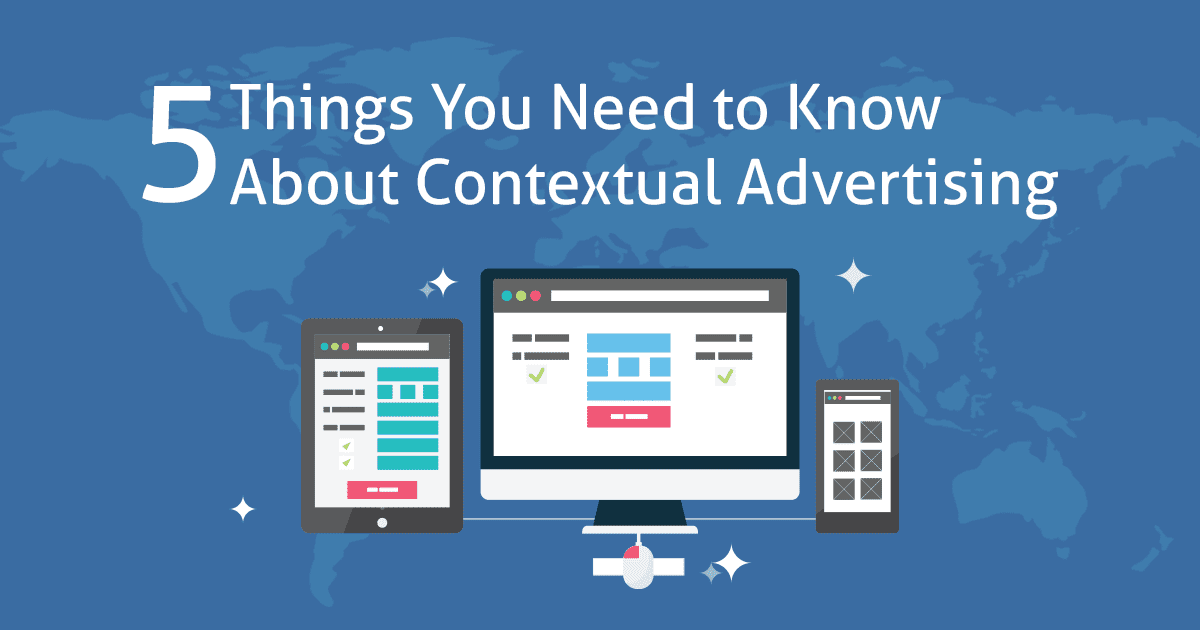Contextual advertising has the power to create memorable and compelling ads, pulling in viewers by offering increased relevancy.
Contextual ads target users based on specific keywords on the page he or she is viewing at the time. As a result, the context of the ad links up with the content on the page. Contextual advertising comes in other forms as well. It’s an opportunity to be authentic, to deliver messages in the moment and to try to get into your viewers’ head.
Contextual advertising is all around us. For example, search engine ads are contextual because the ads that appear are directly based on keywords in the search query. Another example of contextual advertising is Google AdSense. It considers a searcher’s location, language, and keywords to find the best ad for the moment.
At the end of the day, contextual advertising is all about delivering the right message, at the right time, personalized to the viewer. Read on to learn the five best practices and trends in contextual marketing that can help elevate your ad strategy.
1. The Key Elements of Contextual Advertising
Contextual advertising is a fantastic opportunity for brands to get creative. To do this, think about when a viewer may be seeing your messaging. Is it during a holiday or a big event? What are they searching for at the time? How will they be engaging with your product or service?
Additional elements that are important for contextual advertising include:
- Every aspect from language and weather to the time of day.
- Past purchase behavior and the type of device they are using is on.
And remember, it’s okay to start simple.
2. Don’t forget video!
Video plays an influential role in contextual advertising efforts. Placing pre-roll ads in videos before the main video starts is a very effective use of contextual advertising. Another example of contextual videos ads are the ones that run within a video game on a mobile device.
Video has presented itself as an excellent medium for emotional, time-sensitive messages. Remember when airline WestJet produced a video of unsuspecting passengers arriving at their destination and receiving surprise gifts?
3. Pricing is a Partnership Effort
To maximize the profits, both publishers and advertisers are encouraged to work together. It benefits both sides—everyone earns a profit when it’s done right.
Google’s Smart Pricing Scheme allows prices to be set dynamically (though, advertisers have the final say).
4. Mobile is a Huge Game-Changer
Mobile has enabled advertisers to take the concept of contextual advertising and truly hit consumers at the right time.
Emails, push notifications, SMS messages—it’s all available on mobile. And there are more tools and data available to advertisers than ever before. For example, Apple already includes situational predictions on their device holders based on past behavior patterns.
These insights shed light on behaviors such as user app preferences and even day-to-day travel patterns. Talk about being able to reach customers at the right time!
5. Virtual Reality Offers the Newest Wave of Innovation
The advent of virtual reality offers advertisers an entirely new landscape. It’s a contextual advertising playground! Imagine, offering consumers complete brand experiences in a VR world.
Companies such as Coca-Cola, HBO, and Nissan are already taking the lead. Essentially, VR allows commercials to go from engaging and amusing to total immersive experiences. It’s the difference between watching Coca Cola’s iconic Polar Bears sip sodas to sipping drinks alongside them in an arctic environment.
Contextual advertising serves as a reminder that consumers expect more in advertising. The most successful ads succeed because they offer relevant and exciting experiences for viewers.
How can you evolve your ad strategy to become more contextual and meaningful?

